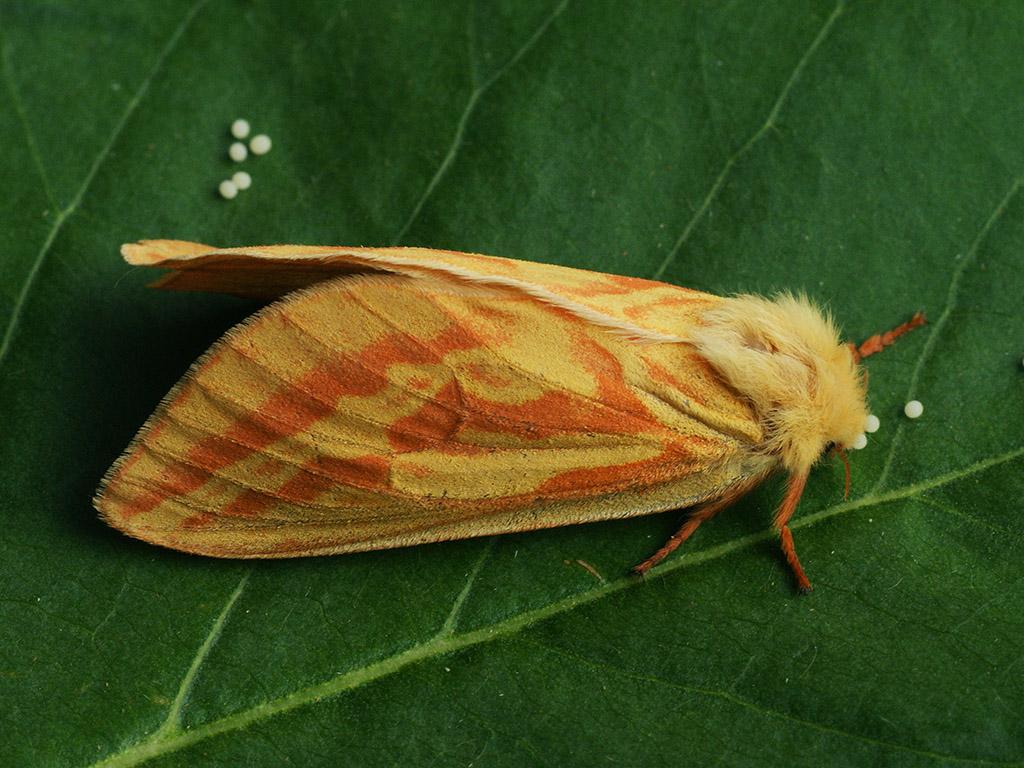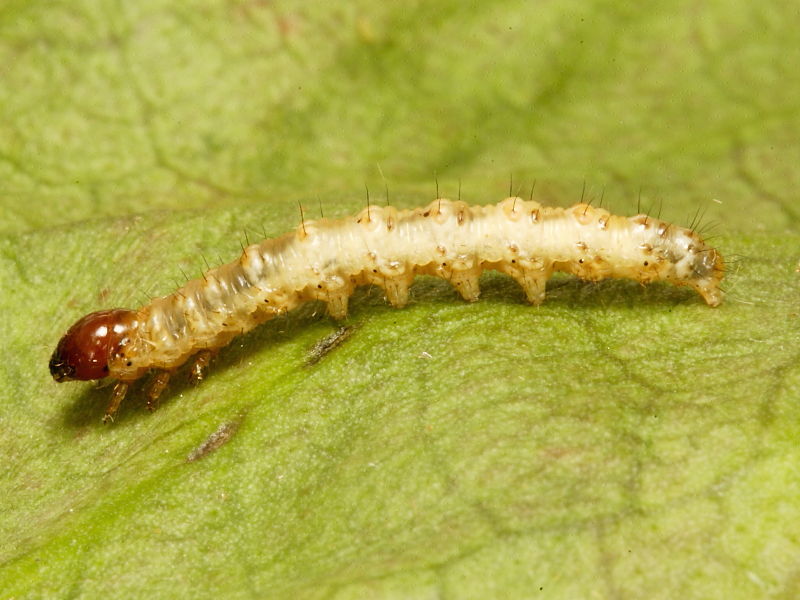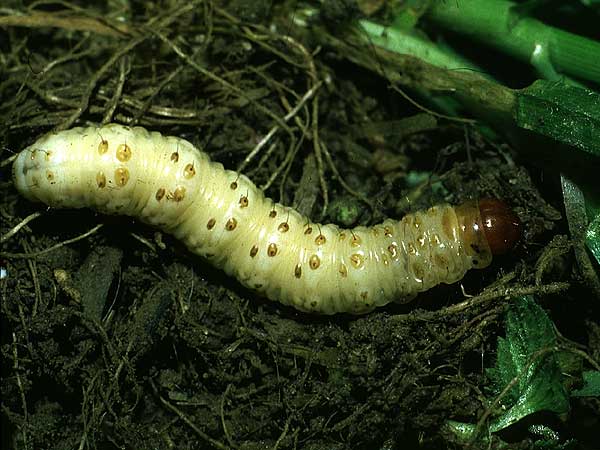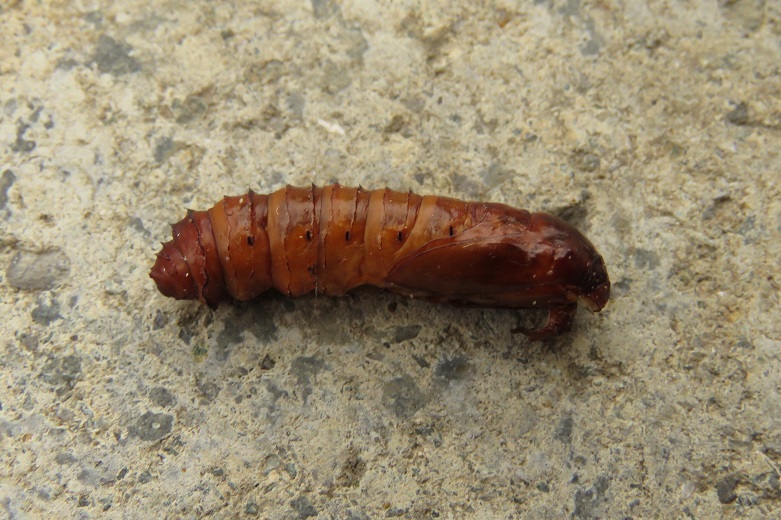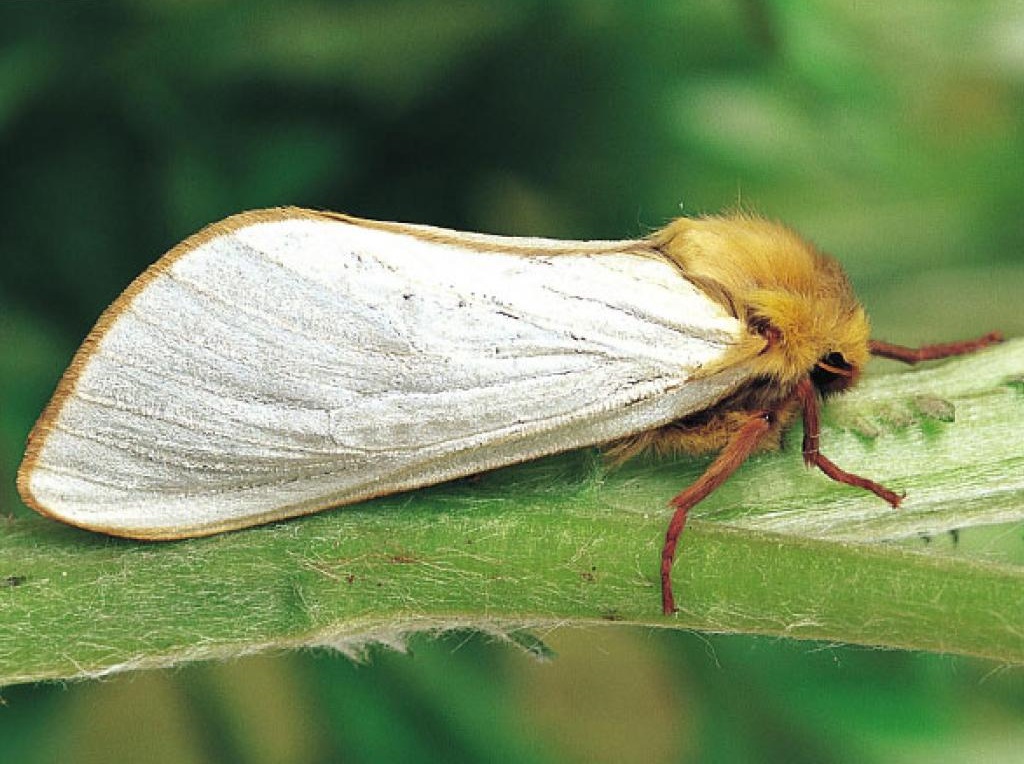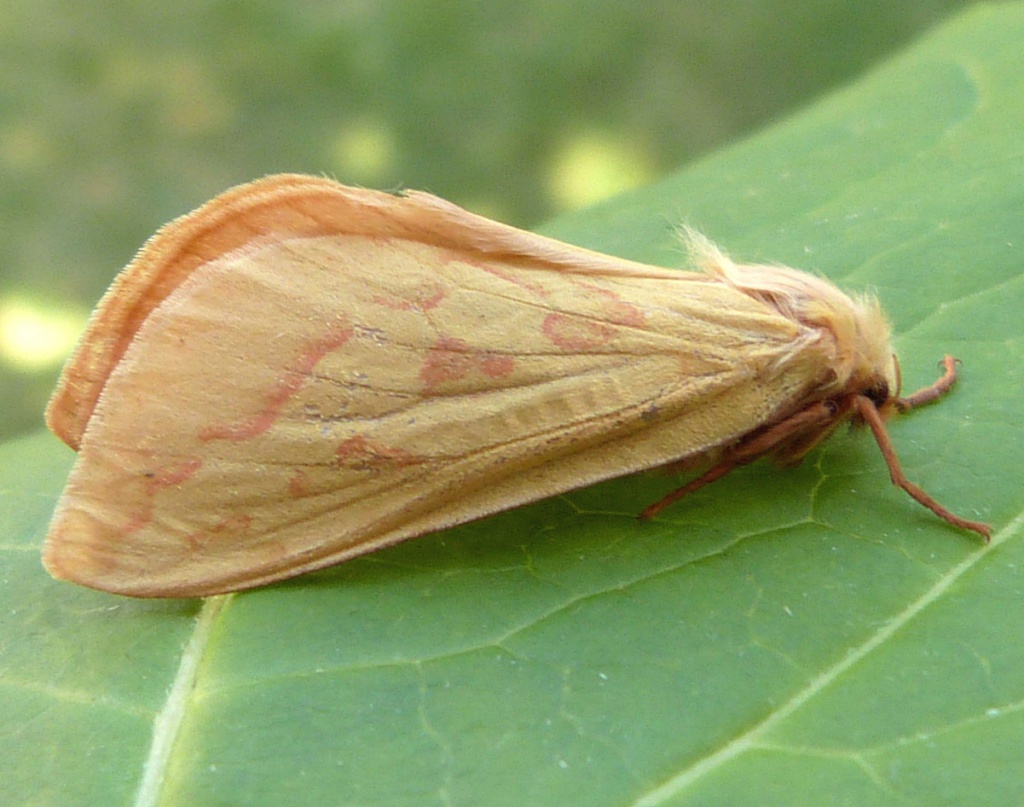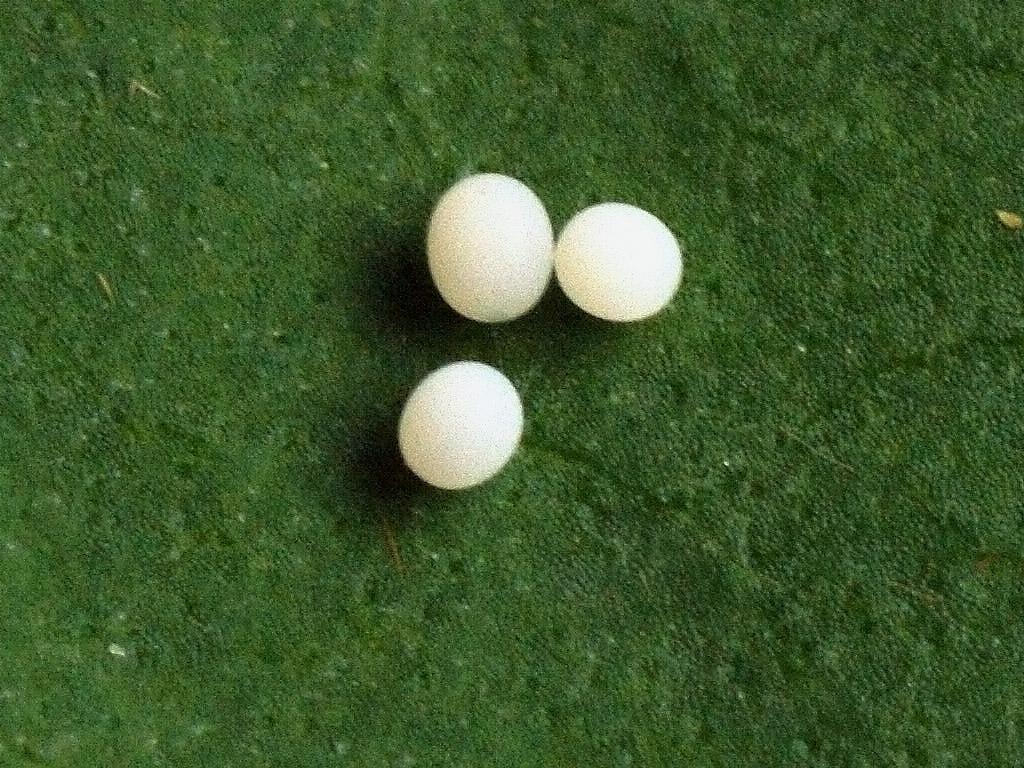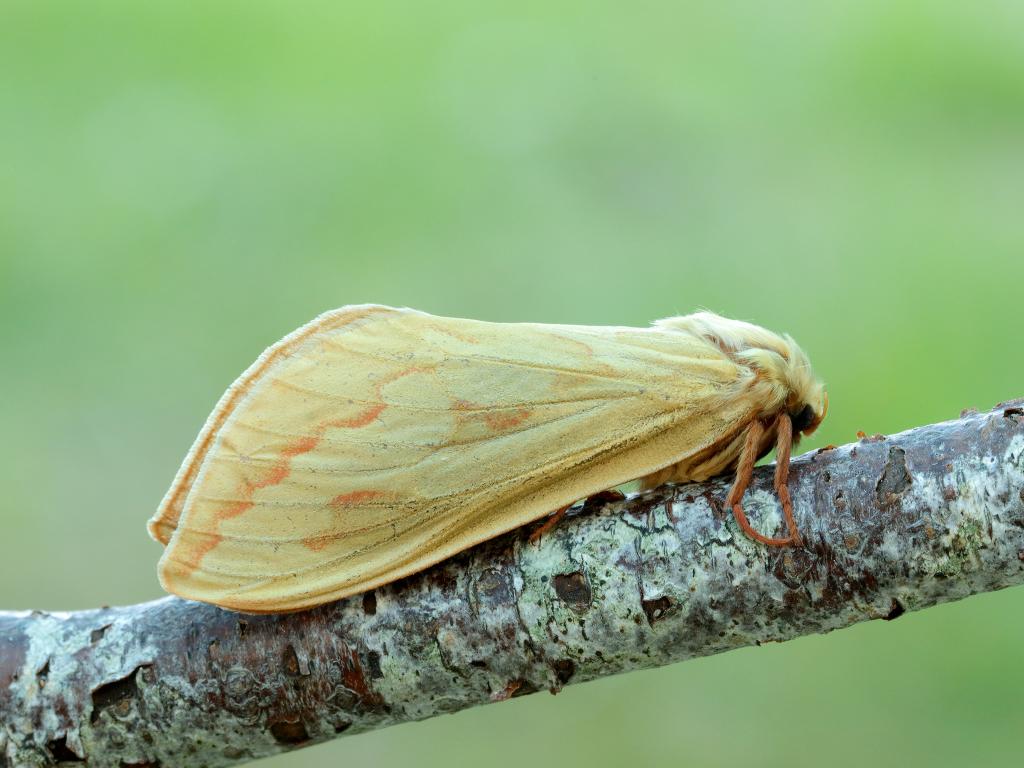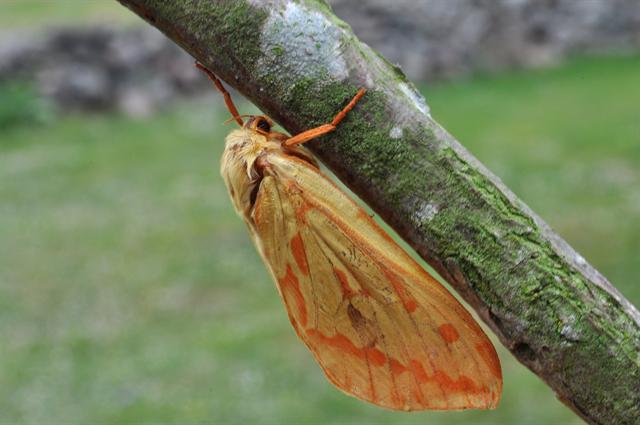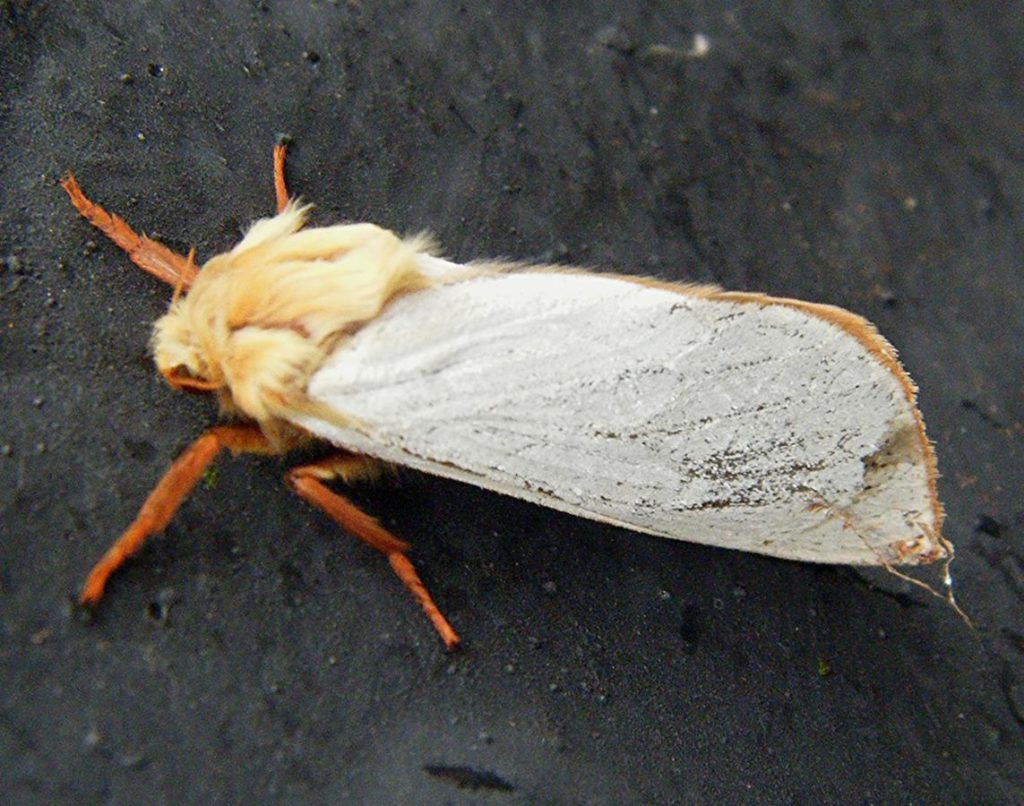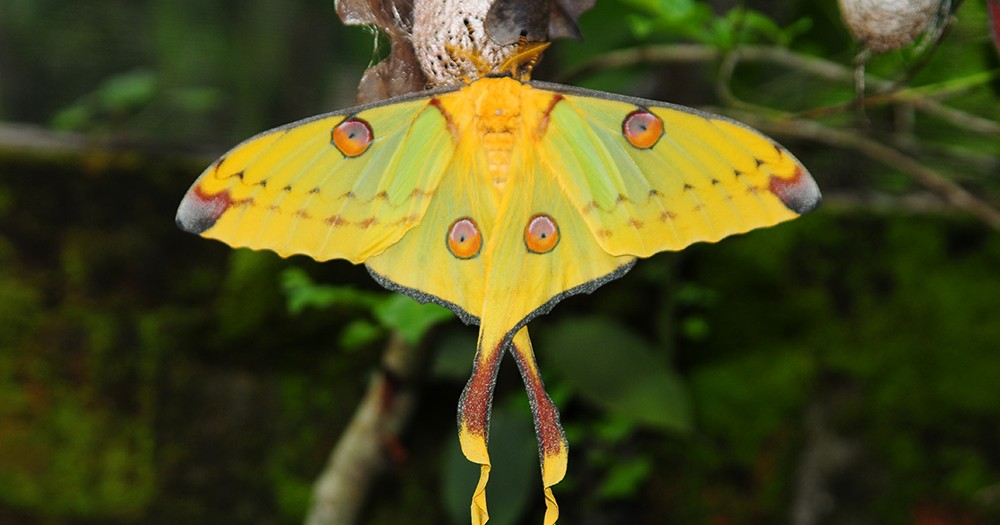Ghost Moth (Hepialus humuli)
The ghost moth indigenous to different parts of Europe gets its name because of the hovering flight pattern displayed by the males as they attract females at night. Their white wings make them look like tiny specters moving up and down as they are in motion.
Described by Swedish botanist Carl Linnaeus in 1758, the ghost moth has two subspecies: Hepialus humuli humuli and Hepialus humuli thulensis.
Scientific Classification
- Family: Hepialidae
- Genus: Hepialus
- Scientific Name: Hepialus humuli
Description and Identification
Caterpillar
The caterpillar has an opaque, white body with a reddish-brown head and brown markings all over. They eat plant rootlets during their initial instars, moving on to larger roots and other parts of the plants’ lower regions as they grow older. The larva has a prolonged development period, taking 2-3 years.
Adult Moth
Sexual Dimorphism: Present.
Males of the species are entirely white, while the females appear yellow with orange markings. Also, the females are larger than the males. The females are larger than the males, with a yellow body, marked in orange spots, against the whitish appearance of the latter.
Color and Appearance
Forewing:
Males – When opened, it is creamy white, bordered in brown. The color remains the same when closed.
Females – When opened, the wings are yellowish-beige with orange markings. The color and pattern remain unchanged when the wings are closed, with the markings getting less prominent.
Quick Facts
| Distribution | Most of Europe; more commonly seen in the UK |
| Habitat | Grassy and weedy places |
| Predators | Bats, birds |
| Lifespan of Adults | 2-5 days |
| Host Plants | Apple, ash, birch, elm, hazel, rose, dogwood, hickory, willow, and maple |
| Adult Diet | Does not eat |
Did you know?
- While not very fast, it can ride at high speed winds to reach 33 mph (53 kph).
- These ghost moths, alongside other white moths, have epitomized the departed souls in European folklore.
- Writer Emily Brontë most likely referenced these moths in the last passage of her novel Wuthering Heights.
Scientific Classification
- Family: Hepialidae
- Genus: Hepialus
- Scientific Name: Hepialus humuli

